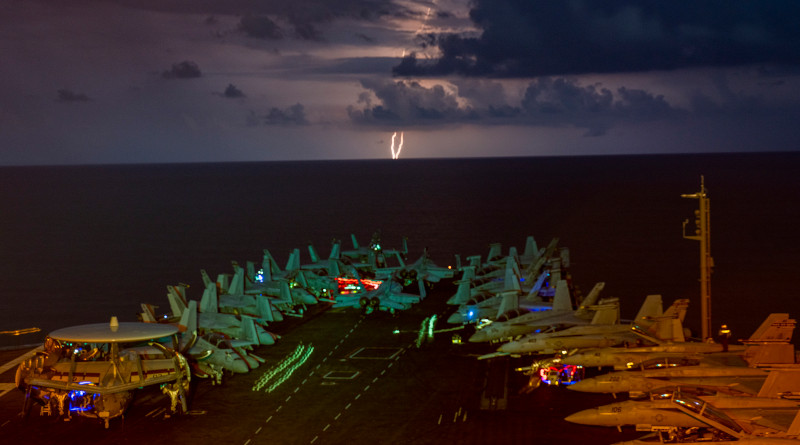Beyond Capacity: The American Military Surplus Destabilizing Global Peace – OpEd
The relationship between the United States and China has evolved into a complex dynamic that extends beyond mere fluctuations. Over the years, official U.S. policy documents, from the 2017 National Security Strategy to the latest iteration in October 2022, have consistently identified China as a principal adversary and competitor.
These documents articulate a view of China as an aspirant global hegemon whose ambitions necessitate containment through all available means. The geopolitical rivalry with China, particularly pronounced in the Indo-Pacific arena, represents the United States’ most significant strategic challenge—not just regionally but also on a global scale. This contest is seen as pivotal in shaping the future international order. The U.S. strategy includes leveraging industrial sanctions as a critical instrument of national security. In line with this approach, Washington has implemented Section 301 tariffs targeting Chinese enterprises, a move that contravenes World Trade Organization regulations.
Secretary Blinken’s focus on China’s industrial overcapacity and the imperative for nations to enforce tariff regulations to protect their domestic industries might be valid. However, this raises a critical inquiry: Are Americans prepared to acknowledge and address the excess capacity they have cultivated within their own military-security sector?
In the realm of international relations, the concept of overcapacity refers to a scenario where a nation’s production surpasses its actual requirements. Specifically, military overcapacity is characterized by a nation possessing a military force or arsenal that exceeds its defense or strategic needs. Such surplus can burden national finances, escalate arms races, and heighten regional discord. Moreover, it may precipitate unnecessary conflicts, weapon proliferation, and the accumulation of weapons of mass destruction. A notable aspect of this phenomenon is the occasional creation of artificial demand for overcapacity, fostering a state of ‘armed peace’ reminiscent of the Cold War era, with the potential for sudden escalation.
In 2023, the U.S. military trade is projected to reach an astonishing $80.9 trillion, marking a 55.9% increase from the prior fiscal year. Concurrently, direct weapon sales by American firms are estimated at $157.5 trillion, bringing the total U.S. arms exports for the year to a staggering $238 trillion. Addressing the issue of military overcapacity has transcended technical realms, evolving into a political conundrum. Efforts at international cooperation to manage the US’s military surplus have devolved into an arms race, transforming the globe into a repository of both conventional and unconventional weapons of mass destruction. In this context, the surplus is disconnected from global market disruptions, with production driven by manufactured demands rather than genuine market needs.
The underlying implications of the statistics and figures suggest a strategy where the United States appears to perpetuate global insecurity as a means to maximize arms sales. This creates a vicious cycle: heightened insecurity diminishes concerns over military overcapacity, while increased overcapacity, in turn, exacerbates global instability. In this context, the absence of a comprehensive American-led development agenda for the world stage is conspicuous. Instead, there is an observable pattern of civilian casualties in regions like the Middle East, casualties inflicted using advanced U.S. weaponry. These incidents serve not only as grim demonstrations of the destructive power of military surplus but also as stark validations of its strategic utility.
The current paradigm appears to be such that for the US, it is peace, not war, that has become superfluous. War has seemingly been woven into the fabric of American geopolitical strategy. The expansion of NATO and the deployment of missile systems along the Russian border have plunged Europe into a protracted conflict with Russia. Furthermore, the establishment of over 800 U.S. military bases globally represents an overreach that serves no purpose other than to ensnare the planet in a strategic net.
While Secretary Blinken has vocally criticized China’s industrial surplus, one must ponder whether the transformation of the globe into a depot of both conventional and unconventional weaponry by the U.S. poses a graver threat. The world order as influenced by American policies has manifested as an armed, anarchic, and unequal system, where political entities are reduced to mere pawns in a grand geopolitical game. In this order, war is not an inevitable outcome but rather a mechanism that fuels the American military-industrial complex’s overproduction—a surplus that fosters a demand for warfare over peace, for conflict over harmonious coexistence.

